The field of dentistry has come a long way in recent years, and one of the biggest changes has been the increasing role of technology. From digital imaging and 3D printing, to advanced treatment planning software and robotic assistants, technology is playing an important role in modern dental care and is helping to improve the quality of care that patients receive.
Here are some ways in which technology is used in modern dental care:
Digital x-rays: Digital x-rays use computer technology to produce images of the teeth and mouth, which can be more detailed and accurate than traditional film x-rays. Digital x-rays also emit less radiation and are more efficient, as the images can be easily stored and shared with other healthcare providers. This can be particularly beneficial in identifying issues that may not be visible to the naked eye, such as cavities, infections, or problems with the roots of the teeth. Digital x-rays can also be easily viewed and analyzed by dental professionals, allowing for quicker and more accurate diagnosis and treatment planning.
Intraoral cameras: Intraoral cameras are small cameras that are used to take detailed images of the inside of the mouth, including the teeth and gums. These images can be used to diagnose and treat dental issues, as well as educate patients about their oral health. Intraoral cameras can capture high-resolution images that can be enlarged and viewed on a computer screen, allowing for more precise diagnosis and treatment. They can also be used to document the progression of treatment, allowing patients and dental professionals to track the improvements in oral health.
Laser dentistry: Laser dentistry involves the use of lasers to perform a variety of dental procedures, including cavity removal, gum contouring, and tooth whitening. Laser dentistry is often more precise and less invasive than traditional methods, and it can often be done with less discomfort for the patient. Lasers can be used to remove decay and bacteria from the teeth, reshape the gumline, and remove stains from the surface of the teeth. Laser dentistry can also reduce the need for anesthetics, as the lasers can be used to numb the treatment area.
Dental CAD/CAM: Dental CAD/CAM (computer-aided design/computer-aided manufacturing) technology is used to create custom dental restorations, such as crowns and bridges. This technology allows for greater accuracy and precision in the design and production of these restorations, which can lead to better fit and function. Dental CAD/CAM uses 3D imaging technology to create a digital model of the mouth and teeth, which can be used to design and manufacture custom restorations. The process typically involves taking a digital impression of the mouth, which is then used to design the restoration on a computer. The design is then sent to a milling machine, which creates the restoration out of a block of dental material. Dental CAD/CAM technology allows for faster turnaround times and a more comfortable experience for the patient, as traditional impressions can be uncomfortable and time-consuming.
Patient communication and record-keeping: Technology has also greatly improved the way in which dental practices communicate with patients and manage their records. Electronic medical records allow for more efficient and accurate record-keeping, and patient portals can be used to communicate with patients and schedule appointments. Patients can access their records and appointments online, as well as communicate with their dental team through secure messaging. This can improve the overall patient experience and streamline the dental care process.
Another important aspect of modern dental care is the use of 3D printing. This technology allows dentists to create highly detailed, custom-made models of a patient’s teeth, which can be used for a variety of purposes. For example, these models can be used to plan complex treatments, such as dental implants or orthodontic treatments, or to create custom-made restorations, such as dental crowns and bridges. The use of 3D printing has greatly improved the precision and accuracy of dental care, and has made it possible to provide more personalized treatment to patients.
In addition to digital imaging and 3D printing, there are many other ways in which technology is being used in modern dental care. For example, many dental offices now use advanced treatment planning software, which allows dentists to create detailed, step-by-step plans for complex treatments. This software can help to ensure that treatments are performed accurately and efficiently, and can help to improve the overall quality of care that patients receive.
Another area where technology is having a major impact is in the field of dental robotics. In recent years, a number of robotic assistants have been developed that are designed to assist dentists in performing a variety of tasks. For example, some robots are capable of performing precision drilling and cavity preparation, while others can assist with the placement of dental implants. These robots can help to improve the accuracy and precision of dental treatments, and can also help to reduce the amount of time that patients need to spend in the dental chair.
Overall, it is clear that technology is playing an increasingly important role in modern dental care. From digital imaging and 3D printing, to advanced treatment planning software and dental robotics, technology is helping to improve the quality of care that patients receive and is making it possible to provide more personalized, accurate, and efficient treatments. As technology continues to evolve, it is likely that we will see even more exciting developments in the field of dentistry, and that technology will continue to play a key role in improving the quality of dental care.
Digital x-rays use computer technology to produce images of the teeth and mouth, while traditional film x-rays use film to create the images. Digital x-rays are more detailed and accurate than traditional film x-rays and emit less radiation. They are also more efficient, as the images can be easily stored and shared with other healthcare providers.
Yes, intraoral cameras can be used to take detailed images of the inside of the mouth, including the teeth and gums. These images can be used to diagnose and treat dental issues, as well as educate patients about their oral health.
Laser dentistry is often more precise and less invasive than traditional methods, and it can often be done with less discomfort for the patient. Lasers can be used to numb the treatment area, reducing the need for anesthetics. Laser dentistry can also be more efficient, as it can often be done in fewer visits.
Dental CAD/CAM technology uses 3D imaging technology to create a digital model of the mouth and teeth, which can be used to design and manufacture custom restorations. This allows for greater accuracy and precision in the design and production of these restorations, which can lead to better fit and function.
Electronic medical records and patient portals can be used to communicate with patients and schedule appointments, improving the overall patient experience and streamlining the dental care process. Electronic medical records allow for more efficient and accurate record-keeping, as all of a patient’s information is stored in one place and can be easily accessed by the dental team. Patient portals can be used to communicate with patients and schedule appointments online, as well as provide patients with access to their records and appointments. This can improve the overall patient experience and make it easier for patients to manage their oral health.
In conclusion, technology has greatly improved the efficiency and effectiveness of modern dental care. From diagnostic tools and treatments to patient communication and record-keeping, technology has played a significant role in advancing dental care and improving the patient experience. By utilizing technology, dental practices can provide more accurate and precise care, as well as streamline the care process and improve patient communication and record-keeping.
In addition, regular checkups and cleanings are an essential part of maintaining good oral health.
By catching issues early and preventing problems from developing, you can keep your smile healthy and avoid discomfort and more serious problems down the line.
Don’t wait to visit a dentist until you have a problem – schedule a checkup and cleaning appointment today with Dr Alps Thakkar!


